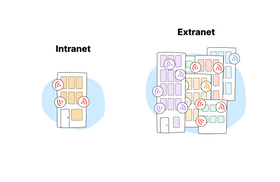Unleash Answers
Our experts answer questions about digital organization, workflows, productivity, and ways to unleash your potential.
Recent Answers
Why Is a Knowledge Management System Important for a Business?
Your company's productivity suffers when employees struggle to find information—which is why a knowledge management system is important tp help you store assets and make them accessible at the right t
Asked 9 months ago
How Does an Index Improve Searching on Your Computer?
Indexing is a crucial stage of the knowledge management process. It happens after you gather data, and involves sorting it into categories based on key search terms, content, and metadata. So, how doe
Asked 9 months ago
Is Big Data Part of AI?
Two emerging knowledge management trends with significant momentum are big data and AI. Organizations today deal with complex datasets that cannot be managed, processed, or analyzed by traditional me
Asked 9 months ago
How Does Knowledge Management Enhance the Decision Making Process?
Knowledge management systems ensure your employees have access to the information they need. But how does knowledge management enhance the decision-making process? It makes the capture, storage, and s
Asked 9 months ago
Is Open-Source Software Safe?
Open-source software (OSS) is free to utilize, study, modify, and distribute—which attracts a large community of users and developers who produce, test, and promote its use. But does such access make
Asked 10 months ago
Related Articles
Recent Posts
Marcel Deer
Is Big Data Part of AI?
Unleash Your Productivity
Insights and resources to boost productivity and performance.
We don't email often. Unsubscribe anytime.



